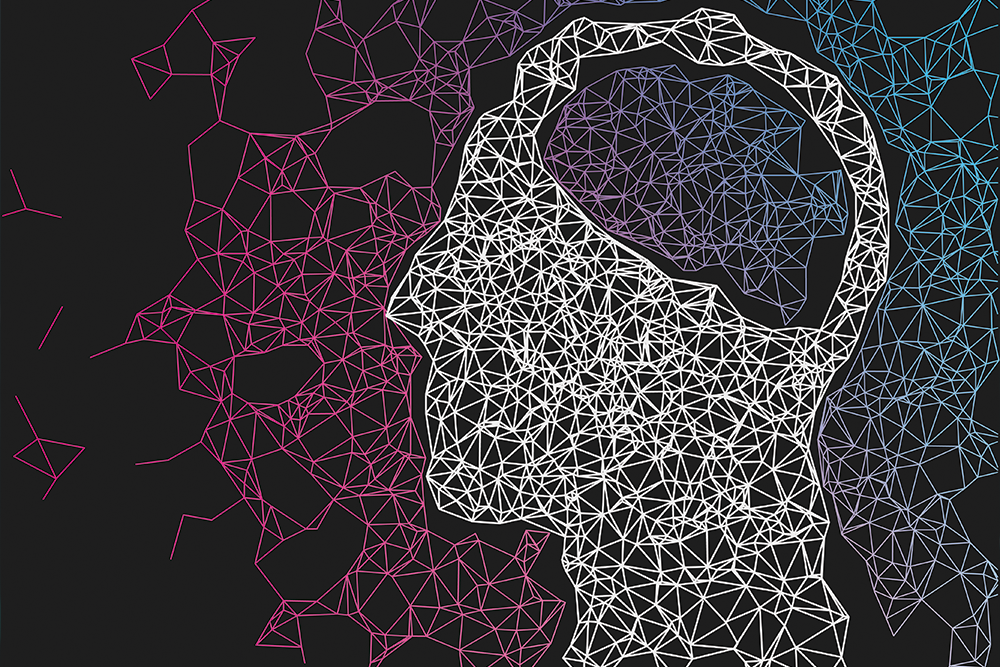Recently, machine learning and deep learning algorithm are frequently mentioned in the Artificial Intelligence (AI) development. As a student without programming backgrounds, I always wondering what exactly is deep learning and how it is used in the application. Oleksii Kharkovyna (2019) gives a clear and brief explanation that for the greatest extent, deep learning is based on a concept of human brains and is to learn from the interaction of brain neurons (Kharkovyna 2019). The deep learning algorithm is modeled after the neural networks and interactions in the neocortex of human brains, where high-level cognition occurs (Kharkovyna 2019). In the brain, a neuron (same as a cell) transmits any information to other neurons, forming a neural network. Similarly, in machines, the neurons are virtual, consisting of bits of codes running complicated and nonlinear statistical regressions (Kharkovyna 2019). The detail of the process can be vividly presented in the figure below. The processes or iterations will not stop until the output has reached an acceptable level of accuracy.

With this basic concept in my mind, when I looked at my iPhone and used Face ID to unlock it, I thought that Face recognition technology must also involve deep learning. The answer is definitely a yes and it has been researched that deep learning is the most appropriate approach to enable a computer to determine the characteristics that needed to be collected in facial recognition (Kharkovyna 2019). Deep learning shows excellent ability in learning image features based on 2 neural network types: convolutional neural networks (CNN) and deep auto-encoder networks (Fenjiro 2017). CNN is used for image segmentation and image compression, whilst deep auto-encoder networks shrink image representation into a simple vector, minimizing the time of searching (Fenjiro 2017).
It was Apple who uses Face ID (the facial recognition technology) when launched its new iPhone in 2017, iPhone X. The technology remains for the latest iPhones (iPhone 11 etc.) as well. It can also be used to enable payment, such as ApplePay and Alipay. Although Apple claimed to work hard to ensure Face ID cannot be spoofed by things like photographs and to continue improving this technology (Tillman 2019). It does have some shortcomings with Face ID. The first thing I was concerning is the safety issue. It is said that your twins (if you have one) or siblings might have the chance to unlock your phone. Additionally, sometimes people may not unlock it with make-up or without make-up. How can Apple work to solve this issue? In a new patent published by the USPTO, Apple details a method by which Face ID can be able to take advantage of subepidermal imaging, identifying features underneath the skin, such as blood vessels and veins (Heisler 2019). It is reported that the assessment of subepidermal imaging can distinguish users with closely related facial features (twins or siblings) during the facial recognition authentication process (Heisler 2019). That is because veins and blood vessels underneath our skin are unique and vary from users even with similar facial features. However, the authenticity of this claim remains to be proofed by the public.
Fenjiro 2017, ‘Face Id: Deep learning for face recognition’, Medium, viewed 13th October 2019 at < https://medium.com/@fenjiro/face-id-deep-learning-for-face-recognition-324b50d916d1>.
Heisler 2019, ‘Apple is working on new technology that’ll take Face ID to the next level’, BGR, viewed on 12th October 2019 at < https://bgr.com/2019/03/15/face-id-vs-twins-subepidermal-imaging-veins-blood-vessels/>.
Kharkovyna 2019, ‘An Intro to Deep Learning for Face Recognition’, DataScience, viewed 13th October 2019 at < https://towardsdatascience.com/an-intro-to-deep-learning-for-face-recognition-aa8dfbbc51fb>.
Tillman 2019, ‘What is Apple Face ID and how does it work?’, viewed on 12th October 2019 at < https://www.pocket-lint.com/phones/news/apple/142207-what-is-apple-face-id-and-how-does-it-work>.


Nice article about Face ID and Deep Learning. Gives a better understanding about the way it is used on a daily basis, by using an iPhone. Great insight about the future of Face ID as well. What other features do you think subepidermal imaging could have? I think it could also have great impact in the healthcare industry.
You are definitely right! There is an article on the subepidermal imaging using polarized light spectroscopy for assessment of skin microcirculation. so, I agree that subepidermal imaging can have effects on healthcare!
Nice read, thanks! I’m excited to see how Face ID / Face Recognition will develop and emerge in the near future. Sure, Apple is making sure it cannot be spoofed by photographs and what not, but you can also think about the other side of it. If it’s based on sub-epidermal imaging, then why does my iPhone not recognise my face 2 minutes after my alarm went off early in the morning? Why does it sometimes refuse to unlock during the day and require me to enter my passcode? Wouldn’t it also be great if the iPhone could unlock based on Face ID without you/me having to swip up first to unlock?
haha, I also had that problem, and I thought it might because I was too close to my iPhone. So, Apple still needs to keep improving~